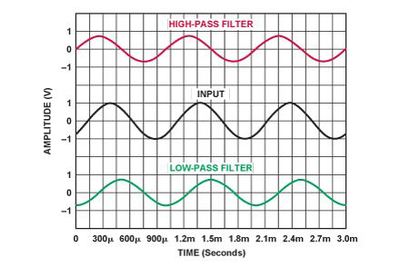Glad you brought this up....
provides a good chance to help dispel yet another oft repeated internet myth.....
A distinction MUST be made between linear phase xovers, and one sided linear phase high pass or lowpass filters.
Fully complementary linear phase xovers do not have pre=ring potential. Whereas linear phase high pass of low pass filters used alone do.
Iow, xovers are cool.
System high pass or low pass, or adjusting drivers' phase independently of frequency response, are not cool.
Here is a graph to illustrate. It's the same 4-way MEH I've been posting in this thread.
The green trace has a Butterworth 18dB/oct minimum phase high pass filter, @100Hz.
The blue trace has a 96dB/oct linear phase high pass filter, @100Hz.
Note the traces when preceeding time 0.
Linear phase hpf (blue) shows huge potential for pre-ring: That's the dive below zero.
Minimum phase hpf (green), none..
Now, both of the the traces
include three 96dB/oct linear phase xovers at 300, 750, and 6300Hz.
Where is the pre-ring in the green trace? Not any.
It's only the system hpf, in this case the 100Hz hpf, that can cause pre-ring.
Now, if the linear phase (blue) is combined with a sub having a 100Hz linear phase low pass filter, the step response will change to look just like green. Symmetric cancellation of pre-ring poetential will occur. (and is what i do in practice when adding sub)
Fully complementary linear phase xovers, not matter how steep or shallow, cancel each others sides pre-ring potential.
If DIY folks fully grasped this, i imagine they'd be jumping up and down in joy, realizing the ease of active xover implementations now available
(without the oft repeated internet myth regarding pre-ring.)
In fairness and full discloser, a case can be made that any lack of fully complementary
acoustic xover, can result in pre-ring, because the two sides don't completely cancel each other acoustically. But this is only possible in the xovers' summation regions and where lobing potential is high.
In practice, I've found using high order/or brick wall, narrows the xover range so well, this potential issue becomes a bit of a joke.
I honestly don't know if lower order linear phase xovers raise the potential, as I get inferior polar response with them compared to steep, and don't bother with low order anymore...
Hope this all made sense....
View attachment 206986


